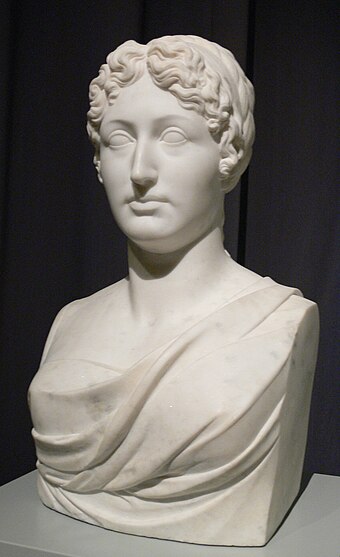Life
Christen was born in Buochs, canton of Nidwalden, Switzerland. In 1785 he became a pupil of the portrait painter Johann Melchior Wyrsch in Lucerne, but soon turned to sculpture. From 1788 to 1791 he worked in Rome under the supervision of Alexander Trippel and then settled in Basel.
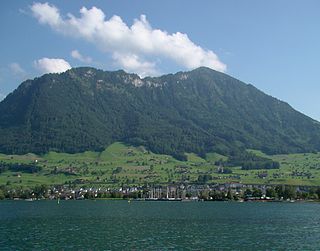
Buochs is a municipality in the canton of Nidwalden in Switzerland.

Lucerne is a city in central Switzerland, in the German-speaking portion of the country. Lucerne is the capital of the canton of Lucerne and part of the district of the same name. With a population of about 81,057 people, Lucerne is the most populous town in Central Switzerland, and a nexus of economics, transportation, culture, and media of this region. The city's urban area consists of 17 municipalities and towns located in three different cantons with an overall population of about 250,000 people.

Basel is a city in northwestern Switzerland on the river Rhine. Basel is Switzerland's third-most-populous city with about 180,000 inhabitants.
His works include a statue of Nicholas of Flüe, the group Angelica and Medor (1791), busts of Salomon Gessner, Johann Jakob Bodmer, Hans von Hallwyl, Johann Heinrich Pestalozzi, Gottlieb Konrad Pfeffel, the Countess of Montgelas (pictured) and a herm of the Emperor Napoleon.

Saint Nicholas of Flüe was a Swiss hermit and ascetic who is the patron saint of Switzerland. He is sometimes invoked as Brother Klaus. A farmer, military leader, member of the assembly, councillor, judge and mystic, he was respected as a man of complete moral integrity. Brother Klaus's counsel to the Diet of Stans (1481) helped to prevent war between the Swiss cantons.

Salomon Gessner (1730-1788) was a Swiss painter, graphic artist, government official, newspaper publisher and poet; best known in the latter instance for his Idylls.

Johann Jakob Bodmer was a Swiss author, academic, critic and poet.
In later life he was an inmate of Thorberg Castle, at that time a lunatic asylum, where he died.
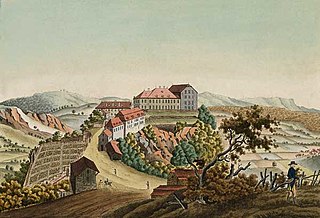
Thorberg Castle is a former Carthusian monastery, or charterhouse, now a prison, located in Krauchthal in the Canton of Bern, Switzerland.

The rise of the lunatic asylum and its gradual transformation into, and eventual replacement by, the modern psychiatric hospital, explains the rise of organised, institutional psychiatry. While there were earlier institutions that housed the "insane", the conclusion that institutionalisation was the correct solution to treating people considered to be "mad" was part of a social process in the 19th century that began to seek solutions for outside families and local communities.
His son was Raphael Christen, also a sculptor.
This page is based on this
Wikipedia article Text is available under the
CC BY-SA 4.0 license; additional terms may apply.
Images, videos and audio are available under their respective licenses.
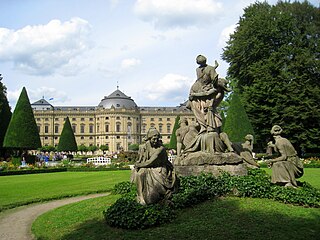
Johann Peter Alexander Wagner (26 February 17301–7 January 1809) was a German rococo sculptor.

The Diocese of Basel is a Roman Catholic diocese in Switzerland.

Franz Joseph Feuchtmayer was a member of the German Feuchtmayer family of Baroque artists of the Wessobrunner School.
Prince Karl Johann of Liechtenstein was the third son of Johann I Joseph, Prince of Liechtenstein (1802–1887) and wife Landgravine Josepha of Fürstenberg-Weitra, nephew of Aloys I, brother of Aloys II and uncle of Johann II and Franz I.
The Struve family were a Baltic German noble family of Eastphalian origin and originated in Magdeburg, the family produced five generations of astronomers from the 18th to 20th centuries. Members of the family were also prominent in chemistry, government and diplomacy.

Johann Melchior Wyrsch was a Swiss painter of the 18th century.
The Mozart family are the ancestors, relatives, and descendants of Wolfgang Amadeus Mozart. The earliest documents mentioning the name "Mozart", then spelled "Motzhart" or "Motzhardt", are from the Bavarian part of Swabia.
The following is a chronological list of classical music composers who live in, work in, or are citizens of Austria.
The following is a chronological list of classical music composers who lived in, worked in, were German citizens, or who grew up and made their careers in Germany.
Johann Baptist Babel was the preeminent sculptor of Baroque era Switzerland. Active mainly in Central Switzerland, he enjoyed an uncommonly long productive period that spanned the transitions from Late Baroque to Rococo and then to Neoclassicism.
Marianne Antonia Kirchgessner, also Mariana Kirchgessner, Kirchgäßner,, was a German glass harmonica player. She was blind from eye disease caused by smallpox when she was four years old. Kirchgessner's artistic qualities brought her the attention of great composers such as Muzio Clementi, Johann Gottlieb Naumann, Johann Friedrich Fasch, Johann Friedrich Reichardt and Franz Anton Hoffmeister.

Karl Johann Baptist, Prince of Dietrichstein, was a German prince member of the House of Dietrichstein, 7th Prince (Fürst) of Dietrichstein zu Nikolsburg, Princely Count of Tarasp, Baron (Freiherr) of Hollenburg, Finkenstein and Thalberg.
Renward Cysat was an apothecary, advocate and city councillor of Lucerne. He is the father of mathematician and astronomer Johann Baptist Cysat.
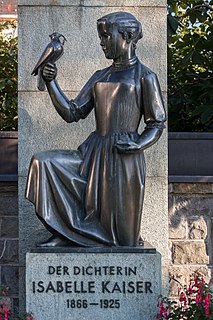
Hans von Matt was a Swiss painter and sculptor. He was at the heart of an artists' network, known to some contemporaries as much for their fun-loving lifestyle as for serious artistic endeavour. He emerged as a writer on the arts and a "culture politician". He was born and lived in Central Switzerland.
